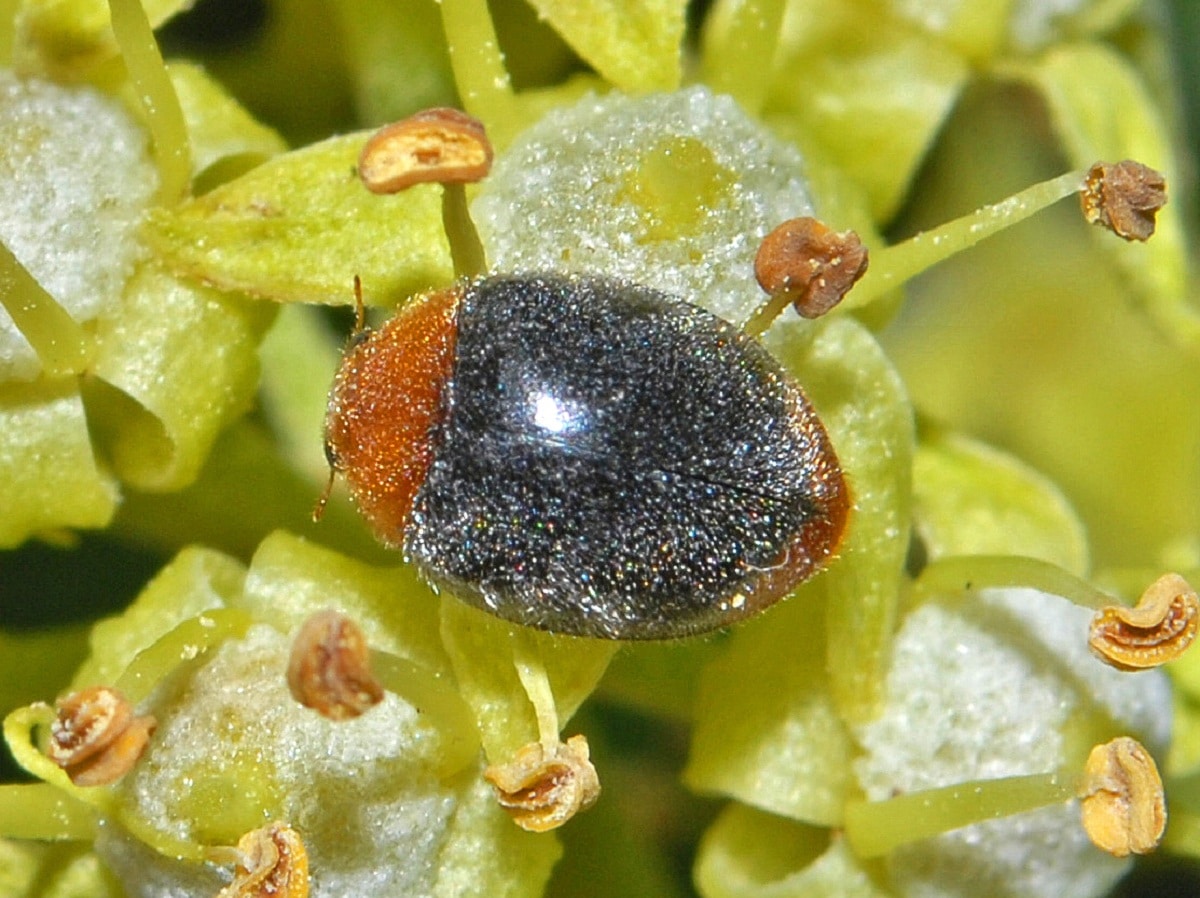

Today we are going to talk about one of the insects that helps us in pest control, such as the cochineal. Its about Cryptolaemus montrouzeri. Thanks to its efficacy against the treatment of mealybugs in crops, it has been introduced in various areas throughout the world. And it is that it helps a lot to control and reduce the use of pesticides for the treatment of various pests.
Therefore, we are going to tell you all the characteristics, morphology, life cycle and uses of the Cryptolaemus montrouzeri.
Key features


We know that it is the most effective natural enemy of the Planoccocus citri. This makes it the most used. It is a type of beetle native to Australia that was first used in California to combat mealybug pests on citrus fruits. This means that, since then, it has spread in numerous countries around the world to reduce the use of pesticides that pollute the environment and promote biological control of pests.
It is a type of insect whose eggs initially have a shiny appearance. When they begin to mature, they take on a more waxy appearance. They are deposited separately in cochineal egg bags. When they hatch from the egg and are in the larval stage, the larvae themselves can reach lengths of up to 14 millimeters. The body is completely covered by waxy projections, especially when they are young larvae. Because they take on this aspect, it makes them confuse the rest of the species. And it is that they acquire an appearance very similar to that of mealybugs. Let’s not forget that mealybugs are their prey and it is these same ones that confuse individuals of this species with theirs.
When he is an adultit turns into a beetle with a length of 4 mm. It has a dark brown color and its head, prothorax and points on the elytra are orange. Its shape is similar to that of ladybugs when they are adults. Males and females can be more easily distinguished by the curvature they have in the terminal part of the abdomen. They can also be differentiated by the coloration of the first pair of legs. When we analyze the female, we see that the middle part of the plants has a color that ranges from dark gray to black. On the other hand, we have that the male has some colors in yellow.
Biological cycle of Cryptolaemus montrouzieri


The life cycle of this beetle go through different states. List the egg state, 4 larval stages, the pupal stage and the adult part. The duration of the development of the complete cycle depends largely on the temperature of the environment. It must be taken into account that the higher the temperature, the shorter the embryonic development of the Cryptolaemus montrouzieri. Embryonic development usually takes between 8-9 days while the temperature is at 21 degrees. If the temperature rises up to about 27 degrees, it only takes 5-6 days.
Another condition that you can see due to variations in temperature is larval development. The development of the larva is usually completed in about 32 days as long as the temperature is at 24 degrees more or less, while It takes about 25 days to complete if the temperature is about 30 degrees. The complete development cycle of Cryptolaemus montrouzieri It varies between 4-7 weeks depending on the temperature, as we mentioned above.
Reproduction of the Cryptolaemus montrouzieri


To begin this cycle, the female copulates shortly after emerging and comment on laying eggs only about 5 days later. These eggs are deposited separately in the cochineal egg bags. This causes them to invade the territory of their prey. The longevity that a female can have is approximately 50 days. Throughout his life it is capable of laying approximately 400 eggs. This amount of eggs can be placed as long as the temperature is around 25 degrees.
As you have been able to verify, they are insects that prefer high temperatures, so their activity levels will be higher in stages in which the temperature tends more significantly. It should also be taken into account that the 1000 complete eggs that the female is capable of laying depends a lot on her diet. When there is a widespread food shortage, the population shrinks. Males reach sexual maturity after 5 days. The sex ratio among the populations of Cryptolaemus montrouzieri it is usually about 1: 1.
Activity
We are now going to know what the activity and the usefulness of the Cryptolaemus montrouzieri. The optimal conditions for the development of this species They occur at temperatures between 22-25 degrees and at a relative humidity of 70-80%. The search behavior ceases at temperatures above 33 degrees, so it doesn’t cope with heat waves very well either. The range of temperatures below where it is also relatively inactive is below 16 degrees, while they are totally inactive below 9 degrees.
The good thing about this species for population control is the mealybug is that, the Cryptolaemus montrouzieri it is its predator in all stages of its biological cycle. Both adult ladybugs and young larvae prefer the eggs, while the larvae of the later instars are not as selective. Since they have the ability to fly, adults are able to cover a large area in search of their prey. Once they have captured the prey, it devours it completely.
If the temperature is around 21 degree just one larva is capable of eating more than 250 mealybug larvae. The grapes are usually observed in protected places such as on stems, the underside of the leaves or on materials that are left from the greenhouses.
As you can see, these are very useful animals when it comes to controlling mealybug populations to reduce the effect on crops. I hope that with this information you can learn more about the Cryptolaemus montrouzieri and their characteristics.
